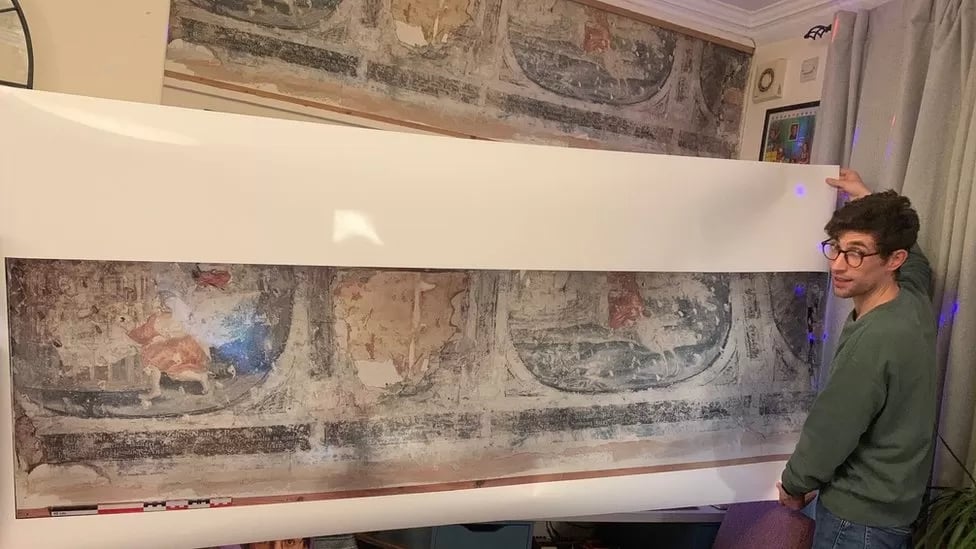
A young couple in the English city of York got more than they bargained for when they had their kitchen fitted for new cabinets: Workers discovered hidden paintings, more than 300 years old, during the renovations.
The historic artworks grace the walls of the one-bedroom apartment that Luke Budworth, a 29-year-old medical researcher at the University of Leeds, shares with his partner, 26-year-old Hazel Mooney, and their dog Leonard. The couple temporarily moved out as the renovations got underway in December—only to get a fateful call from the contractors mentioning that they had found a painting.
When the two came home, the new cabinets had already been installed, once again obscuring the works from view. But Budworth suspected there might be something hiding behind the paneling in the living room, on the other side of the chimney, as well.
“I got my tools out and started chipping away at the board. As soon as I lifted the panel off, there it was, beautiful colors,” Budworth told the BBC, noting that he initially thought he was looking at Victorian wallpaper.
Luke Budworth found this 17th-century wall painting hidden behind paneling in his York home. Photo courtesy of Luke Budworth.
He called up Historic England, which quickly determined that the paintings were of “national significance,” especially because domestic wallpaintings were rare in York in the 17th century.
“We always knew there was an odd piece of the wall, but just thought the flat was really wonky as it’s been a million different things over the years,” Budworth, who bought the home in October 2020, told SWNS.
The two painted friezes each measure about nine-by-four feet, and are cut off at the top by the ceiling. There is a man in a cage being pulled by an angel, and another man in a white cart. The paintings contain scenes from poet Francis Quarles’s 1635 book Emblems, and are believed to date between the year of its publication and around 1700, when the style of artwork would have fallen out of fashion.
Luke Budworth found this 17th-century wall painting hidden behind paneling in his York home. Photo courtesy of Luke Budworth.
That means the artwork actually predates the building itself, a Grade II listed Georgian building from 1747. Budworth lives in York’s historic Micklegate neighborhood, within the ancient wall that once protected the city, and his home appears to have been constructed around an existing wall.
“The discovery of these 17th-century murals in a home in Micklegate, York is fascinating. They were first discovered in 1998 then covered over,” Historic England told CNN. “They raise various questions about the ages of the buildings in this row of historic homes and the history of Micklegate itself. Finds like this tell us that our historic homes have many secrets.”
The organization took professional photographs of the painting, which it has sent to the conservation of wall painting department at the Courtauld Institute of Art in London. It also created a full-size, high-res replica of the frieze for Budworth, and helped to cover up the artwork to preserve it. He is hoping to one day get funds for its conservation.
Luke Budworth found this 17th-century wall painting hidden behind paneling in his York home. Photo courtesy of Luke Budworth.
“I’m very excited to have found them and am loving them, but they’re also kind of a burden,” Budworth told SWNS. “From what I gather, there’s no external funding and conservation fees are thousands of pounds.”
For now, the replica will be a focal point in their decor, beloved for both its artistic and historic value.
“It’s bonkers to think that it was here before things like the Great Fire of London [in 1666],” Budworth added. “Hopefully we can get the word out and see if any societies or PhD students want to do some experimental conservation projects. I also hope that this inspires other people on Micklegate to start looking at their own walls suspiciously.”